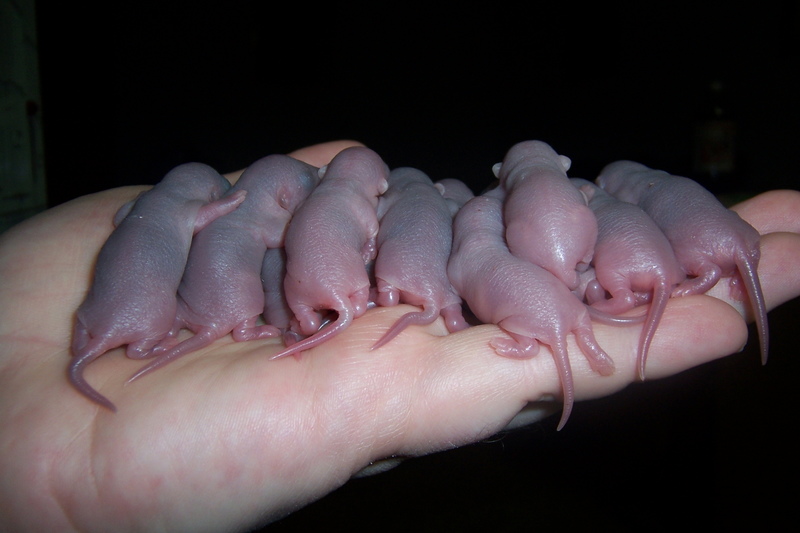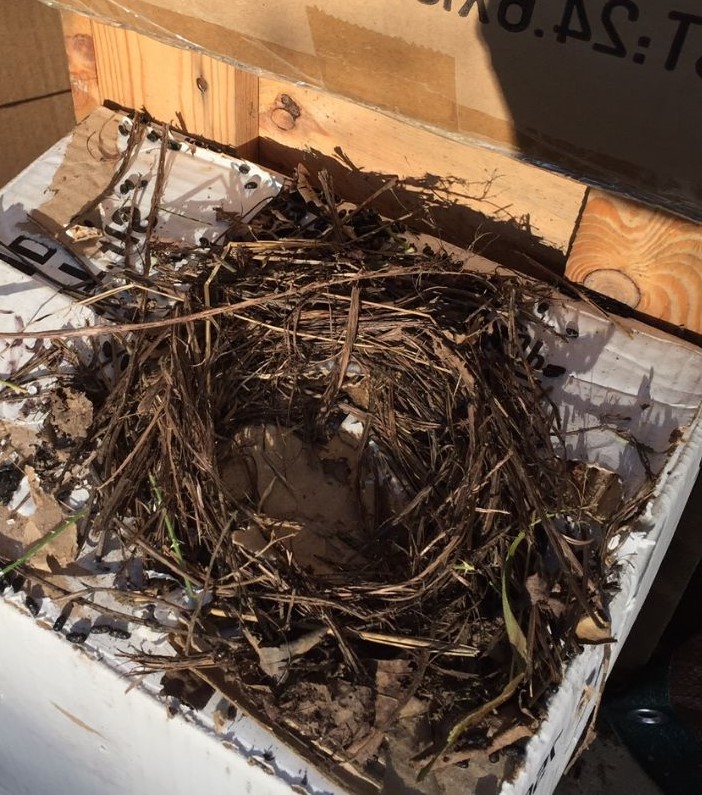
2020 is the year of the rat in the Chinese Zodiac, and according to tradition, that means it is a bad year to be a fellow rat. For those born in a previous rat year, the year is all but destined for mishaps and unfortunate circumstances; and 2020 seems to be living up to that destiny, not only for the people encompassed by this Zodiac symbol, but for the rats themselves. Though rats are generally adaptable and highly successful at living alongside humans, the major lifestyle and economic shifts that have been adopted worldwide to combat COVID-19 have caused these critters to find themselves suddenly thrust into survival mode.
For rats that have made their homes near restaurants and other food establishments, they are accustomed to living a life with plenty of access to food and water, but with so many food establishments shut down or operating at a drastically reduced capacity, those rats have seen their food supply curtailed and are being forced to find new means with which to survive. As reported by Dartunorro Clark for NBC News in the article “Starving, angry and cannibalistic: America’s rats are getting desperate amid coronavirus pandemic”, rats that have been displaced by the coronavirus shut downs are turning to drastic measures. Not only are these rats hitting the streets in droves looking for new places to find food, when they do find a promising location, it is often already inhabited, which leads to lethal fights over territory. In cases where food is scarce the rats have been turning to cannibalism, especially in the form of infanticide, as a means of surviving.
Seeing large numbers of desperate rats on the move would be unnerving at any time, but add that it’s in the midst of a pandemic and it’s impossible for the sight not to bring to mind the most infamous epidemic: The Black Plague. Though it’s been nearly 700 years since that devastating disease struck Europe, killing more than 20 million people, its memory has persisted throughout Western societies, and has been one of the more notable references for the dangers that large numbers of rats can pose to humans. Though COVID-19 is not linked to transmission via rat, the social-distancing measures being put into place to combat that virus is increasing the potential for rats to interact with humans in larger numbers than we have seen for quite some time, and that can cause a whole host of problems.

What Dangers do Rats Pose?
A rat infestation is no small problem; these critters are not simply a nuisance, they can prove to be quite harmful. Of course when we think of rats one of the first dangers that comes to mind is disease; not only did the black rat carry fleas infected with the bubonic plague that led to The Black Death, but rats carry more than 40 diseases that are harmful to humans, including murine typhus, the plague, and rabies. The threat of rat-borne disease is significant enough that it is believed that in the last 1,000 years they have taken more human lives than all wars and revolutions combined. But disease is not the only threat that a rat infestation poses; they are also exceptionally dangerous to agricultural products, destroying approximately 20% of these products annually world-wide. They are even dangerous to local flora and fauna, preying on nestlings, competing with other animals for food items, and playing a significant role in preventing certain trees from re-growing. And under certain circumstances, they can even provide a direct danger by attacking people; around 14,000 people annually report having been attacked by rats in the U.S.; of these attacks some will even bestow mortal wounds.

What are the Warning Signs of a Rat Problem?
Rats are nocturnal creatures, which means they are the most active at night. So if you are hearing noises in your walls or in your attic at night there is a high likelihood that there are rats inside your home. Remember that even if the noise sounds too loud to be a single rat, the noise of several rats running around in an attic can be surprisingly strong. You should also be on the lookout for rat droppings (which are dark brown, oblong, and tapered at the ends) and nests (which are generally made out of soft materials like cloth, paper, cardboard, cloth, and even hair), particularly in largely undisturbed areas of your home or near food and water sources. Another sign to pay close attention to is chewed wiring (either within your home or even in your vehicle); not only is this a sign of a potential rat problem, it could also prove dangerous to you or your home’s safety and is likely to be quite costly to repair. And of course the most tell-tale sign of a rat problem is actually seeing them inside your home, garage, shed, etc.
How can you Prevent a Rat Infestation?
During the COVID-19 crisis, while businesses are closed or operating at a drastically reduced rate, it will be more difficult than usual to prevent rat infestations. With rats finding themselves desperate for food that would have otherwise been plentiful in dumpsters and garbage cans, they are increasingly likely to go in search of food inside business and homes. Once inside a structure, rats can rapidly multiply in numbers, with an average female rat having seven to ten litters each year and each litter containing an average of six to ten pups. That means in just one year a rat population could go from two to around 1,250 if left unchecked. This is why preventing rats from ever getting into your home is so important, because once you notice the rat infestation, you are likely to have quite a few rats to combat.
So how do you prevent rats from getting into your home? It’s more difficult than you may think, as a rat only needs a hole about the size of a quarter to get inside a building, they can climb trees and brick walls, can walk across phone lines, can jump three feet vertically and four feet horizontally, and can chew through lead, cinder block, and aluminum sheeting. Still, it is possible to make your home a less inviting target for hungry rats on the move. Here are some helpful tips to keep your home rat-free:
- All entry points that are visible need to be sealed. Remember, not only can a rat fit through a hole the size of a quarter, it could gnaw on a smaller hole to widen it to be of a suitable size for entry. A quick call to The Bug Dude @ 1-800-310-BUGS will put you at ease. All of the exclusion work we perform comes with a 1-year warranty.
- Trim tree branches away from your roof and vines away from your walls. You want to make it as difficult as possible for a rat to have access to parts of your home you may not be able to regularly inspect (like the roof line).
- Keep trash cans sealed. Always keep lids on trash cans and make sure that they are securely in place.
- Keep pet food in sealed containers. If you store your pet food in the garage, a metal container would be the best bet. Remember that anything your pet could eat, a rat would happily eat as well.
- Remove any bird feeders or bird baths from your yard. The goal is to not have anything that could entice a rat onto your property, and nothing is more enticing than readily available food and water.

How do you Treat a Rat Infestation?
Given the prolific nature of rats and their potential dangers, it’s important to get a rat problem treated as soon as you see the first signs that you might be facing an infestation. Though it might be tempting to try to treat for rats yourself, eliminating an infestation is more complicated than simply placing a trap and waiting for a rat to get caught in it. Rats are clever creatures, so it’s important to not only choose the best type of product to battle the infestation with, it’s also necessary to know exactly where to place the product(s) to ensure the greatest success in treatment. By calling The Bug Dude at 1-800-310-BUGS and having a trained technician out to your home, you not only get verification that the pest you are combating is rats, you will also get a professional who can determine the most effective and safest (for you, your home, and your pets) method for treatment.
During this time of global crisis it’s easy to focus solely on the threat that is on everyone’s mind and forget that the threats that we have always had to contend with are still very present, and in the case of rats, are actually increased because of this pandemic. That’s why it’s more important than ever to keep your home and your family safe and call Mid-Cities Pest Control at the first signs of infestation, and not allow rats to add one more worry to your plate.
Further Reading:
“Year of the Rat” – Chinese New Year 2020 – Wasai LLC
“Starving, angry and cannibalistic: America’s rats are getting desperate amid coronavirus pandemic” – Dartunorro Clark – NBC News
“Black Death” – History.com Editors – A&E Television Networks
“The Facts about Rats” – U.S. Fish & Wildlife Service
“Facts About Rats” – Alina Bradford – Live Science
Author Bio: Alissa Breach has been gaining knowledge and experience around pest control concerns over the last 11 years while working for Mid-Cities Pest Control. She has a creative writing BA from UW-Madison and is always pursuing new and interesting writing projects.
Attributes
depositphotos.com
Freepik




